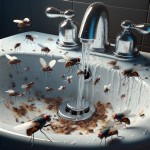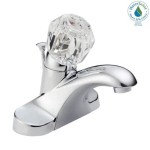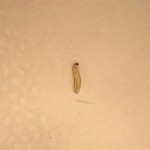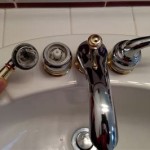```html
My Bathroom Sink Stinks: What Can I Do?
A persistent odor emanating from a bathroom sink is a common household problem. While seemingly minor, the source of the unpleasant smell can range from simple to more complex issues requiring attention. Ignoring the problem can lead to worsening odors, potential build-up of harmful bacteria, and even damage to plumbing fixtures. Therefore, identifying and addressing the cause is crucial for maintaining a clean and sanitary bathroom environment.
Several factors can contribute to a smelly bathroom sink. Understanding these potential sources is the first step towards effectively resolving the issue. This document will outline the major causes of sink odors, provide practical troubleshooting steps, and offer guidance on preventive maintenance to keep the problem from recurring.
Biofilm Buildup in the Drain
One of the primary culprits behind a stinky bathroom sink is the accumulation of biofilm within the drain. Biofilm is a slimy layer composed of bacteria, organic matter (such as hair, soap scum, and toothpaste residue), and minerals. This mixture adheres to the drainpipe walls, providing a breeding ground for odor-producing microorganisms. The decomposition of organic material by these bacteria releases gases like hydrogen sulfide, which has a characteristic rotten egg smell.
The drain's environment, consistently exposed to moisture and organic waste, is ideal for biofilm formation. Over time, the layer thickens, trapping more debris and amplifying the odor. Furthermore, the biofilm can restrict water flow, leading to clogs and further exacerbating the problem.
Addressing biofilm buildup requires a multi-pronged approach. First, physical removal of some of the accumulated material is essential. This can be achieved by removing the drain stopper and manually cleaning away visible debris. Second, a chemical treatment to kill the bacteria and dissolve the organic matter is necessary. A variety of solutions can be used, ranging from household ingredients to specialized drain cleaners. Finally, regular maintenance practices are crucial to prevent future biofilm accumulation.
Clogged P-Trap
The P-trap, the curved section of pipe located under the sink, serves a crucial function in preventing sewer gases from entering the bathroom. It works by trapping a small amount of water, creating a seal that blocks the upward flow of gases from the drainage system. However, when the P-trap becomes clogged with hair, soap scum, or other debris, the trapped water can stagnate and become a breeding ground for bacteria. This stagnant water, combined with the decomposing matter, produces foul odors that can permeate the bathroom.
A clogged P-trap can also lead to a reduction in water flow, as the blockage restricts drainage. This slow drainage can further contribute to odor production by allowing more organic material to accumulate and decompose within the trap. In severe cases, a complete blockage can occur, resulting in a backflow of water and sewage into the sink.
Unclogging the P-trap is often a relatively straightforward process. Placing a bucket under the P-trap to catch any spilled water is the first step. Next, the slip nuts that connect the P-trap to the drainpipes are loosened. Once loosened, the P-trap can be carefully removed and emptied of its contents. Any debris trapped within the trap should be thoroughly cleaned out before reassembling the P-trap. If the clog is particularly stubborn, a small brush or plumbing snake can be used to dislodge it.
Ventilation Issues
Proper ventilation is essential for maintaining a healthy plumbing system and preventing unpleasant odors. Plumbing vents, typically located on the roof, allow air to enter the drainpipes, facilitating proper water flow and preventing a vacuum from forming. These vents also allow sewer gases to escape the drainage system, preventing them from entering the home.
When plumbing vents become blocked by debris such as leaves, bird nests, or snow, the air pressure within the drainpipes can become unbalanced. This can lead to a siphoning effect, where the water in the P-trap is drawn out, breaking the seal and allowing sewer gases to enter the bathroom. The resulting odor can be quite strong and persistent.
Diagnosing a blocked plumbing vent can be challenging, as the vents are typically located on the roof and not easily accessible. Signs of a blocked vent may include slow-draining sinks, gurgling sounds coming from the drains, and a noticeable sewer gas odor in the bathroom. Addressing a blocked vent typically requires professional assistance, as it involves accessing the roof and clearing any obstructions from the vent opening.
Mineral Deposits and Hard Water
In areas with hard water, mineral deposits can accumulate within the drainpipes over time. These deposits, primarily composed of calcium and magnesium, can create rough surfaces that trap organic matter and encourage biofilm formation. The presence of mineral deposits can also reduce the diameter of the drainpipes, restricting water flow and contributing to clogs.
The combination of mineral deposits, trapped organic matter, and biofilm creates an ideal environment for odor-producing bacteria. The rough surfaces provided by the mineral deposits provide ample surface area for bacteria to colonize, while the trapped organic matter provides a constant food source. The resulting odor can be exacerbated by the release of minerals into the water as it flows through the drainpipes.
Removing mineral deposits can be a challenging task, as they tend to be very hard and resistant to conventional cleaning methods. Using a specialized descaling solution designed for plumbing fixtures is often necessary. These solutions typically contain acids that dissolve the mineral deposits, allowing them to be flushed away. However, it is important to use descaling solutions with caution, as they can be corrosive and potentially damage certain types of pipes.
Rarely Used Sinks
Sinks that are used infrequently can also become a source of unpleasant odors. When a sink is not used regularly, the water in the P-trap can evaporate over time, breaking the seal and allowing sewer gases to enter the bathroom. Furthermore, the stagnant water in the drainpipes can become a breeding ground for bacteria, leading to the formation of biofilm and the release of foul odors.
Infrequent use can also lead to the accumulation of dust and debris in the sink basin and drain. This debris can decompose and contribute to the overall odor problem. In addition, the lack of regular flushing can allow mineral deposits to build up more quickly, further exacerbating the issue.
The solution for rarely used sinks is simple: flush them regularly. Running water through the sink for a few minutes each week will help to keep the P-trap full, prevent the accumulation of stagnant water, and flush away any debris that may have accumulated. This simple practice can significantly reduce the risk of odor problems.
Cleaning Solutions for a Smelly Sink
Several cleaning solutions can be used to address the issue of a smelly bathroom sink. The choice of solution will depend on the severity of the odor and the suspected cause. It's important to consider the material of the sink and pipes to prevent damage from overly harsh chemicals.
Baking Soda and Vinegar: A classic and environmentally friendly solution, baking soda and vinegar create a chemical reaction that helps to loosen debris and kill bacteria. Pour a cup of baking soda down the drain, followed by a cup of vinegar. Let it fizz for 30 minutes, then flush with hot water.
Boiling Water: Simply pouring boiling water down the drain can help to melt away grease and soap scum. This method is best for minor clogs and odors. Exercise caution when pouring boiling water, especially with PVC pipes, as excessive heat can potentially damage them.
Enzyme Drain Cleaners: These cleaners use enzymes to break down organic matter, making them a safe and effective option for addressing biofilm buildup. They are less harsh than chemical drain cleaners and are generally safe for all types of pipes.
Chemical Drain Cleaners: While effective at dissolving clogs, chemical drain cleaners should be used with caution. They can be corrosive and potentially damage pipes, especially older ones. Follow the manufacturer's instructions carefully and wear protective gloves and eyewear when using these products. Avoid mixing different types of chemical drain cleaners, as this can create dangerous fumes.
Professional Drain Cleaning: For stubborn clogs or persistent odors, professional drain cleaning may be necessary. Plumbers have specialized tools and equipment to effectively clear drains and identify underlying plumbing problems.
Preventive Maintenance
Preventive maintenance is key to keeping bathroom sinks clean and odor-free. Implementing a few simple practices can significantly reduce the risk of future problems.
Regular Flushing: Flush the sink with hot water regularly to prevent the accumulation of debris and keep the P-trap full.
Strainers: Use a strainer in the drain to catch hair and other debris before they enter the drainpipes.
Avoid Pouring Grease Down the Drain: Grease solidifies as it cools, leading to clogs and unpleasant odors. Dispose of grease in the trash instead.
Periodic Cleaning: Clean the drain with baking soda and vinegar or an enzyme drain cleaner on a regular basis to prevent biofilm buildup.
Check Ventilation: Periodically inspect plumbing vents for any signs of blockage.
By understanding the potential causes of a smelly bathroom sink and implementing appropriate cleaning and maintenance practices, individuals can effectively address the problem and maintain a clean and sanitary bathroom environment. Regular attention to these details is crucial for preventing the recurrence of unpleasant odors and ensuring the long-term health of the plumbing system.
```
How To Clean A Stinky Sink Drain By Home Repair Tutor

How Can I Help A Stinky Bathroom Sink Drain Cleaning More

What Causes Bathroom Drains To Smell

Why Does My Bathroom Sink Smell And What To Do About It

How To Clean A Stinky Sink Drain By Home Repair Tutor

Why Your Bathroom Sink Drain Smells
My Bathroom Smells Bad But Only When Its Hot Outside It Also Will Slightly Go Away I Run The Sink And Toilet Bathtub Any Thoughts On What Is

How To Clean Stinky Drains Liquid Plumr

How To Clean Stinky Drains Liquid Plumr
:max_bytes(150000):strip_icc()/__opt__aboutcom__coeus__resources__content_migration__mnn__images__2018__08__sink_drain-351af8e441034f319fe07f00c091d8b6.jpg?strip=all)
How To Clean A Smelly Drain Naturally
Related Posts







